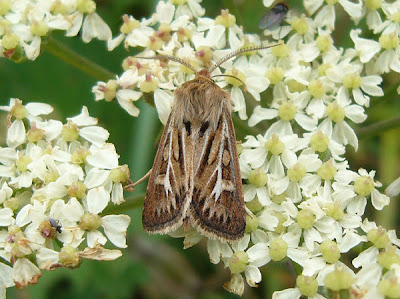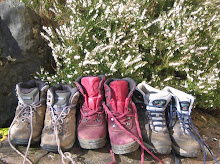 This ‘interconnectedness’ is known today by the buzzword, biodiversity, a catch-all that celebrates the bones, heart and lungs of the ecosystems in which we all live and breathe. It recognises the contributions played by land, sea and sky; soil, rock and cloud; phytoplankton, fish and whale; mosses, lichens and liverworts; beaches, birds and butterflies. Everything, including human beings, the destroyer and potential saviour of all that we celebrate!
This ‘interconnectedness’ is known today by the buzzword, biodiversity, a catch-all that celebrates the bones, heart and lungs of the ecosystems in which we all live and breathe. It recognises the contributions played by land, sea and sky; soil, rock and cloud; phytoplankton, fish and whale; mosses, lichens and liverworts; beaches, birds and butterflies. Everything, including human beings, the destroyer and potential saviour of all that we celebrate!
On the Isle of Mull, much is made regarding the contribution that the island’s ‘celebrity’ wildlife brings to the island. For a decade or more, thousands of ‘eco-evangalists’ have made the crusade to Mull, in order to grab a slice of the wildlife action that has so vividly been portrayed by television programmes, such as ‘SpringWatch’ and ‘AutumnWatch’. For many, the Isle of Mull has become synonymous with White-tailed Eagles, Otters and Corncrakes, birds and beasts that are rarely, if ever, encountered in parts of the mainland.
 It is only right that we celebrate our iconic wildlife, but, in doing so, we should always remember that they could not thrive on Mull if it wasn’t for the wonderful supporting cast of other wild things that exist on the island. The White-tailed Eagle is not an island and there is, indeed, more to the magic of the island of Mull than White-tailed Eagles!
It is only right that we celebrate our iconic wildlife, but, in doing so, we should always remember that they could not thrive on Mull if it wasn’t for the wonderful supporting cast of other wild things that exist on the island. The White-tailed Eagle is not an island and there is, indeed, more to the magic of the island of Mull than White-tailed Eagles! In 2011, Mull Magic will continue to support the island’s eagles and otters, as we have always done, but we will redouble our efforts to bring more of the undiscovered and the unheralded wildlife to the attention of those with eyes to see and ears to hear. In 2011, let’s all make the wildlife resolution to CELEBRATE THE UNCELEBRATED and to marvel as much at the humble House Sparrow as the exhilarating (White-tailed) Eagle!
In 2011, Mull Magic will continue to support the island’s eagles and otters, as we have always done, but we will redouble our efforts to bring more of the undiscovered and the unheralded wildlife to the attention of those with eyes to see and ears to hear. In 2011, let’s all make the wildlife resolution to CELEBRATE THE UNCELEBRATED and to marvel as much at the humble House Sparrow as the exhilarating (White-tailed) Eagle!
















































